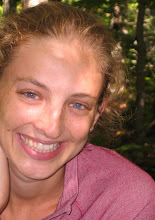 Welcome to Nowhere (bullet hole road.)
Welcome to Nowhere (bullet hole road.)Leaning against the walls of the stage, a group of actors waits for audience members to take their seats. The actors could be hanging out at a pool bar, the women looking sexy in their shorts and tight fitting clothes, the men wearing Western attire: a cowboy hat and a plaid shirt. The evocative costumes contrast the setting for the performance, which does not give away any particular place. At the center of the stage, a large sculpture made of plexi glass, monitors, cables, microphones and lights awaits to be awakened by the performers. What we are about to experience will be mediated through the technically complex sculpture in the room, and the installation, together with the actors, will be responsible for creating the world of the performance, both visually and aurally. The lights go out, and the quite whispers (amplified through microphones) of a woman and a man set the mood for the intimate performance to follow.
Soon enough, Temporary Distortion’s latest production, Welcome to Nowhere (bullet hole road), lulls you into its eerie, quiet rhythm. Similarly to previous productions by the same company, Welcome to Nowhere mixes video and live performance, exploring what it means to bring the two together on stage. Referencing avant-garde theater work by Richard Foreman, Elizabeth LeCompte, and Robert Wilson, Temporary Distortion takes its own stab at form and at dealing with multiple media on stage. This particular production is at once still and on the move. Every time the actors speak, a small spotlight focuses on their face as they bring microphones to their lips and whisper to each other and to the audience. While the film overhead shows a couple on a road trip, or a highway extending for miles in the dark, the actors stand still underneath the screen, only moving in order to replace each other. At times the images of the video come in sync with the lines of the actors, creating a ghostly echo effect, as the actors double themselves in the film. The actor’s stillness is very helpful for the audience’s vision, as we are free to concentrate on the film’s development without too much distraction from action by the actors. At the same time, the rhythm of the video itself allows the gaze to drift back and forth from screen to actors, giving one the chance to enjoy the live performance as well as the moving imagery above.
The violent and sexually charged plot of Welcome to Nowhere is told in whispers and through evocative images, creating an atmosphere at once seductive and chilling. In the story, Hunter and Wyatt reminisce over a traumatic event that occurred during a road trip in the West of the United States. Both with them and through the recollections of the people involved in the accident, we are invited into an emotional and spiritual landscape, an experience of travel and search. Yet we are never tricked into forgetting that we are in a theater. The installation at the center of the stage serves as a constant reminder of the active choice by the actors to enter the “theatrical machine” in order to present the audience with the story. At the same time, the box-like sculpture is reminiscent of a transparent confessional, in which the apparatus of communication is made explicit for everyone to observe, and through which the actors are in control of their performance (the light switches and the microphones are all operated by the performers.)
Welcome to Nowhere succeeds in creating a relationship at once intimate and distanced from the audience. In the design of the piece, the elements of sound, film and live performance come together organically, working with rather than against each other, and creating a harmoniously dissonant performance. Temporary Distortion is working with exciting new possibilities in theater, merging different artistic element on the stage without concealing the technical machine that makes it all possible. If you are interested in seeing something new, don’t miss their future performances!
Visit Temporary Distortion for future performances:
http://www.temporarydistortion.com/












